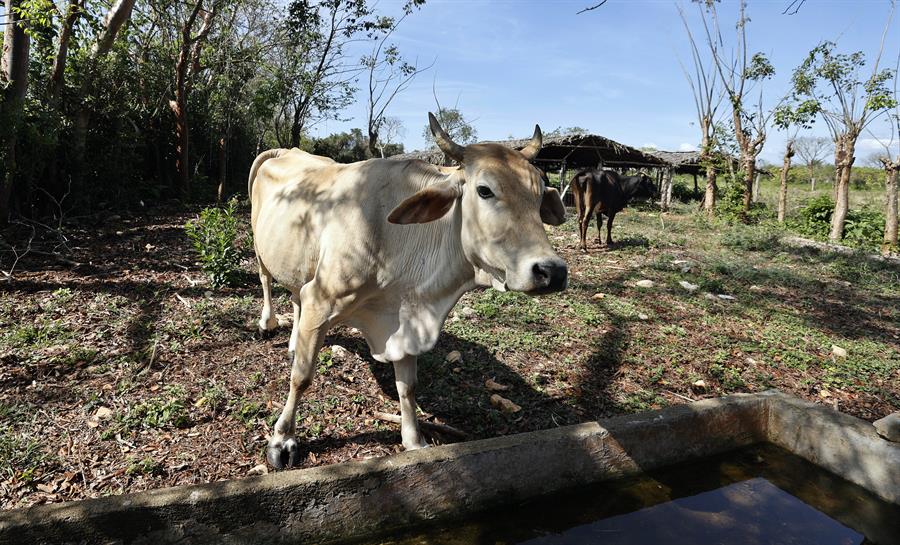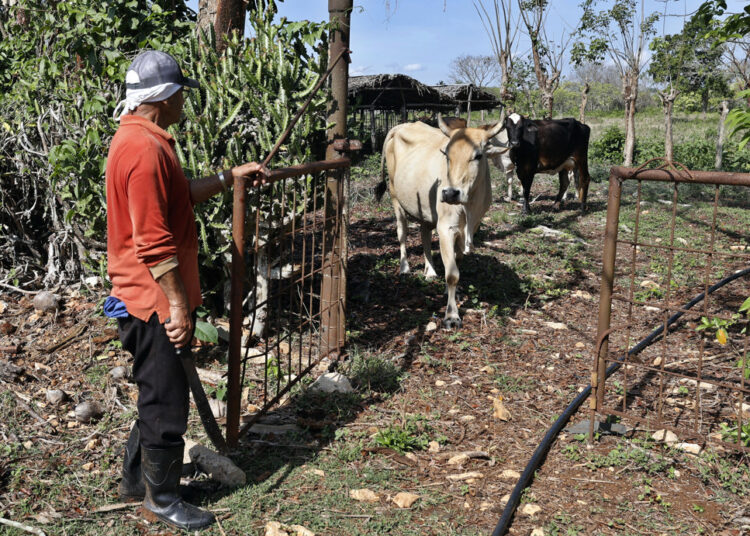Julio, a 71-year-old Cuban farmer, decided to sell all his cows last year, tired of the “vandals” who stole them at night and then sold the meat on the black market.
“They’ve killed many farmers’ cattle, a lot of cattle. They started killing my cows every two or three days, then every two weeks. They killed up to eight of them! And I told my brother: ‘Look, I can’t go on. We’re going to get rid of everything because at this rate we’re going to be left with nothing, and we’re already old,’” he told EFE news agency with a tired expression.
The stress of not meeting the amount of milk he was supposed to deliver to the state and the lack of resources to pay a guard were the final straws for this pair of farmers from the town of Vegas, on the outskirts of Cárdenas, in Matanzas.
Their case is not an isolated one. The theft and illegal slaughter of cattle — a practice classified as a crime in the country — has been a long-standing problem that resurfaces in the most brutal form every time a new economic crisis erupts.
However, for Julio, with several GDP declines behind him, things had never reached this level.
Crime on the rise
There are no updated figures, but the limited data available, scattered in the archives of the official press and the National Office of Statistics and Information (ONEI), reflect that this perception is not far from reality.
In 2022, Cuba reported the loss of 82,000 cows due to theft and illegal slaughter, 145% more than the previous year. That same year, Matanzas was the province with the third highest number of detected cases of this crime: 8,150, almost three times more than in 2021.
Another farmer from Vegas, who asked to remain anonymous, told EFE that the increase in cattle thefts, especially those involving violence, cannot be explained only by the crisis’s social cost.
“After COVID, we’ve had immense difficulties in our country, and from that point on, the mentality of many has been completely flawed. They’ve tried to take things the easy way out: attacking a farmer who gets up at 3:00 in the morning to milk his cow, and when he gets to where he has it locked, it turns up dismembered,” he laments.
This situation is, in itself, a three-pronged tragedy: it means less dairy production in a country with a chronic milk shortage; it drives farm workers, many of whom own land and have limited profit margins, to ruin; and it highlights the power of the black market as the only way to obtain meat.
According to official data cited in 2023 by the state-run Tribuna de La Habana, Cubans currently consume 7% of the animal protein they should consume per month.

Thefts with violence
A young farmer, who also asked not to give his details, told EFE that the farmers of Vegas have already suffered attacks with improvised firearms.
“In recent years, it’s worsened at an enormous speed. It’s always happened, but minimally. Not in this category. And many people are getting rid of animals. What are you going to do? Either ruin yourself or ruin someone else,” he says, frustrated.
Whether due to malnutrition, illegal slaughter, or age, the number of cattle has declined in recent years.
According to official data cited in the Cuban press, the country’s cattle population fell from 3.2 million in February 2024 to 2.9 million in January of this year. In 2019, the number was around 4 million.
In this regard, the Cuban government has reiterated its hardline approach: from January to August of last year, Cuban courts tried 1,615 people for “conduct associated with the crime of illegal slaughter of cattle and trafficking in meat.”
But Julio doesn’t think it’s enough: “It’s not easy. You have to catch them in the act. Because often the report is filed, and all you find is a dead cow.”
Juan Carlos Espinosa / EFE










